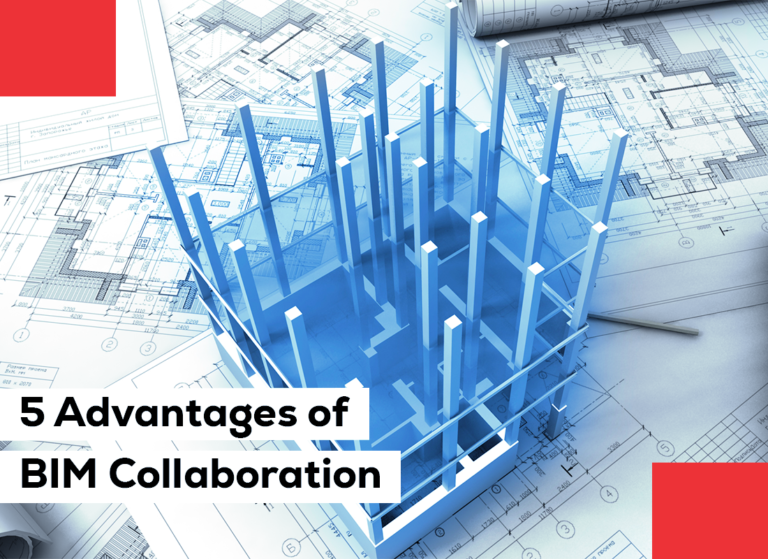
5 Advantages of BIM Collaboration
Building Information Modeling (BIM) collaboration has transformed the construction industry by providing a more integrated and efficient approach to project planning, design, and execution. By bringing all project stakeholders together on a single digital platform, BIM facilitates enhanced communication, coordination, and decision-making. This collaborative environment not only improves the quality of the project outcomes but also ensures that projects are completed on time and within budget. Here are five key advantages of BIM collaboration that highlight its importance in modern construction.
Enhanced Communication
BIM based collaboration significantly enhances communication among all project stakeholders by providing a centralised platform where information can be shared and accessed in real-time. This seamless flow of information ensures that architects, engineers, contractors, and owners are always working with the most current data, reducing the likelihood of misunderstandings and errors. Enhanced communication fosters a more cohesive project planning and execution process, as all parties have access to the latest project data, designs, and updates. This transparency not only helps in quickly addressing issues but also facilitates more efficient and informed decision-making. Additionally, the use of BIM collaboration tools enables more effective virtual meetings and remote coordination, which can be particularly beneficial for projects involving teams in different geographic locations.
Improved Coordination
One of the primary advantages of BIM based collaboration is the enhanced coordination it offers among various disciplines involved in a construction project. By integrating architectural, structural, and MEP (mechanical, electrical, plumbing) systems into a single model, BIM ensures that all components are designed to work together seamlessly. This integration helps in identifying and resolving potential conflicts early in the design phase, thereby minimising costly rework and delays during construction. Improved coordination ensures that all project elements are synchronized, leading to a more efficient construction process and higher-quality outcomes. The ability to visualise and manage the interdependencies of different systems reduces the risk of clashes and enhances the overall integrity of the project. Furthermore, the use of BIM facilitates better coordination with subcontractors and suppliers, ensuring that materials and components are delivered and installed as planned.
Increased Efficiency
It leads to increased efficiency in project workflows by providing a centralised model that streamlines the design and construction process. By allowing all stakeholders to work from a single source of truth, BIM eliminates redundant tasks, reduces manual data entry, and minimises errors. This collaborative approach enables project teams to synchronise schedules, optimise resource allocation, and streamline construction sequences, resulting in projects being completed faster and more cost-effectively. The efficiency gained through BIM collaboration also translates into better use of labour and materials, reducing waste and improving overall project productivity. Moreover, BIM’s ability to simulate and plan construction activities in a virtual environment helps in identifying potential bottlenecks and inefficiencies, allowing for proactive adjustments that enhance project efficiency.
Enhanced Decision-Making
BIM collaboration provides a wealth of data and insights that support informed decision-making throughout the project lifecycle. The comprehensive information available in the BIM model allows stakeholders to analyse various scenarios, evaluate design alternatives, and assess potential impacts on cost and schedule. This data-driven approach enables project teams to make strategic decisions that optimise project outcomes and improve overall performance. Enhanced decision-making leads to better design quality, improved project performance, and reduced risks. By leveraging the detailed analytics provided by BIM, stakeholders can address issues proactively and make adjustments that enhance the overall success of the project. Additionally, the ability to perform real-time analysis and simulations helps in making timely decisions that keep the project on track.
Better Project Outcomes
The combined benefits of enhanced communication, improved coordination, increased efficiency, and better decision-making result in superior project outcomes. BIM collaboration ensures that projects are delivered on time, within budget, and to the highest quality standards. The integration and synchronization of all project elements lead to fewer errors, reduced rework, and a smoother construction process. Better project outcomes also translate into increased client satisfaction and higher return on investment. By adopting them, construction firms can achieve more predictable and successful project deliveries, enhancing their reputation and competitiveness in the industry. Furthermore, the use of BIM supports continuous improvement and innovation, as the data and insights gained from one project can be applied to future projects, driving ongoing enhancements in project delivery and performance.
It offers numerous advantages that significantly enhance the overall planning, design, and execution of construction projects. From enhanced communication and improved coordination to increased efficiency, better decision-making, and superior project outcomes, the benefits of BIM collaboration are substantial. Integrating all stakeholders onto a single platform and providing a comprehensive and accurate digital representation of the project, drives better project performance and ensures successful project delivery. Embracing BIM based collaboration is a strategic move that can lead to more efficient, cost-effective, and high-quality construction projects, ultimately benefiting all parties involved and contributing to the advancement of the construction industry as a whole.


5 Responses